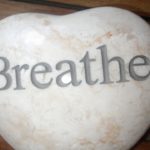
Positive airway pressure (PAP) is a mode of respiratory ventilation used primarily in the treatment of Sleep apnea. PAP ventilation is commonly used for those who are critically ill in hospital with respiratory failure, congestive cardiac failure and acute exacerbation of COPD and asthma and in newborn infants (neonates). There are several forms of PAP devices: Continuous positive airway pressure
Read More …
Pediatric Jaundice – Prevention – Avoid contaminated food and water, Maintain healthy and hygienic condition, Adequate feeding.
Pediatric Jaundice – Treatment Using Home Remedies, Yoga, And Diet – Foods to be taken: Intake of a lot of fluids, Liquid diet for at least 5 days, Light diet of Cereal porridge, yogurt,fruit salad,
Pediatric Jaundice – Symptoms – Nausea and vomiting, Yellow skin and eyes, Pale or clay colored stools, Dark colored urine, High fever with chills, muscle and joint pain. Pediatric Jaundice – Causes – Viral infection of the liver (hepatitis A, hepatitis B, hepatitis C, hepatitis D, and hepatitis E)..
When red blood cells break down, a substance called bilirubin is formed. When this bilirubin builds up in the blood, fluids, and body tissues of the babys body it causes yellowing of the babys skin and tissues due to deposition of excessive bilirubin pigment in the blood. This condition is called as Jaundice or Hyperbilirubinemia.
Pediatric Febrile Seizures – Treatment Using Home Remedies, Yoga, And Diet – Foods to be given Foods to be avoided: Eggs, Milk and its products, Fruits,
Pediatric Febrile Seizures – Prevention – Keep the child very lightly dressed, or take all their clothes off if the room is warm, Give lots of cool drinks.
Febrile seizures are convulsions that can happen during a fever (febrile means feverish). They do not cause any harm and does not mean the child has a more serious long-term health problems. Mostly it is seen between six months and six years of age. They are also known as febrile fits or febrile convulsions.Subdivided into two groups:Simple or typical febrile seizure (85% of febrile seizures): Generalized, less than 15 minutes, occur within 24 hours of onset of feverComplex: Longer than 15 minutes, onset more than 24 hours after onset of fever or multiple seizures in 24 hours
Pediatric Febrile Seizures – Symptoms – Fits, Fever (mild to severe), Vomiting and foaming at the mouth, Rolling of the eyes, Loss of consciousness. Pediatric Febrile Seizures – Causes – Any illness that causes a fever (high temperature) can cause a febrile seizure..
Pediatric Dengue Fever – Symptoms – High fever, Runny nose, Cough, Mild skin rash. Pediatric Dengue Fever – Causes – Dengue fever is caused by four similar viruses spread by mosquitoes of the genus Aedes..
 Positive airway pressure (PAP) is a mode of respiratory ventilation used primarily in the treatment of Sleep apnea. PAP ventilation is commonly used for those who are critically ill in hospital with respiratory failure, congestive cardiac failure and acute exacerbation of COPD and asthma and in newborn infants (neonates). There are several forms of PAP devices: Continuous positive airway pressure Read More …
Positive airway pressure (PAP) is a mode of respiratory ventilation used primarily in the treatment of Sleep apnea. PAP ventilation is commonly used for those who are critically ill in hospital with respiratory failure, congestive cardiac failure and acute exacerbation of COPD and asthma and in newborn infants (neonates). There are several forms of PAP devices: Continuous positive airway pressure Read More …
 Positive airway pressure (PAP) is a mode of respiratory ventilation used primarily in the treatment of Sleep apnea. PAP ventilation is commonly used for those who are critically ill in hospital with respiratory failure, congestive cardiac failure and acute exacerbation of COPD and asthma and in newborn infants (neonates). There are several forms of PAP devices: Continuous positive airway pressure Read More …
Positive airway pressure (PAP) is a mode of respiratory ventilation used primarily in the treatment of Sleep apnea. PAP ventilation is commonly used for those who are critically ill in hospital with respiratory failure, congestive cardiac failure and acute exacerbation of COPD and asthma and in newborn infants (neonates). There are several forms of PAP devices: Continuous positive airway pressure Read More …